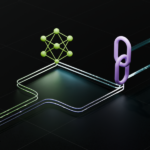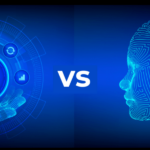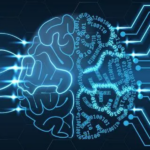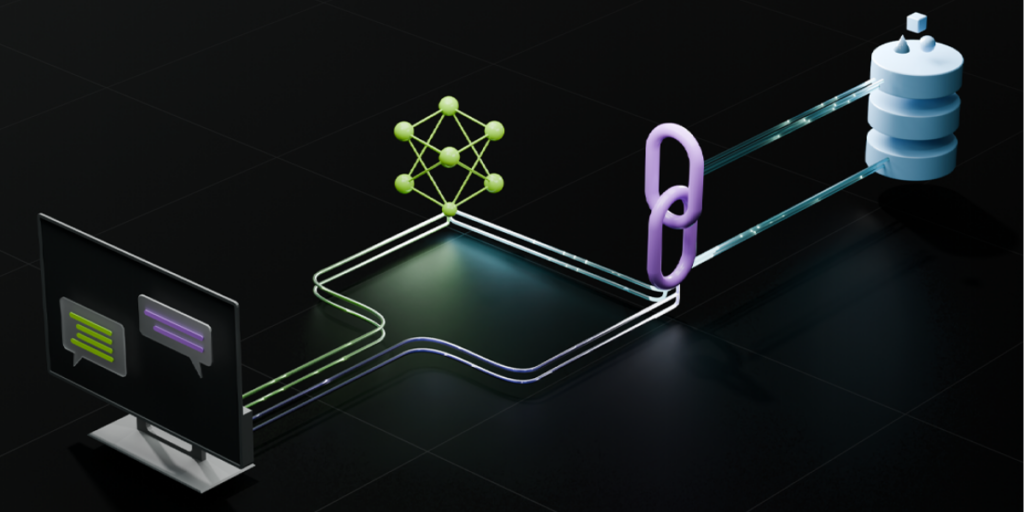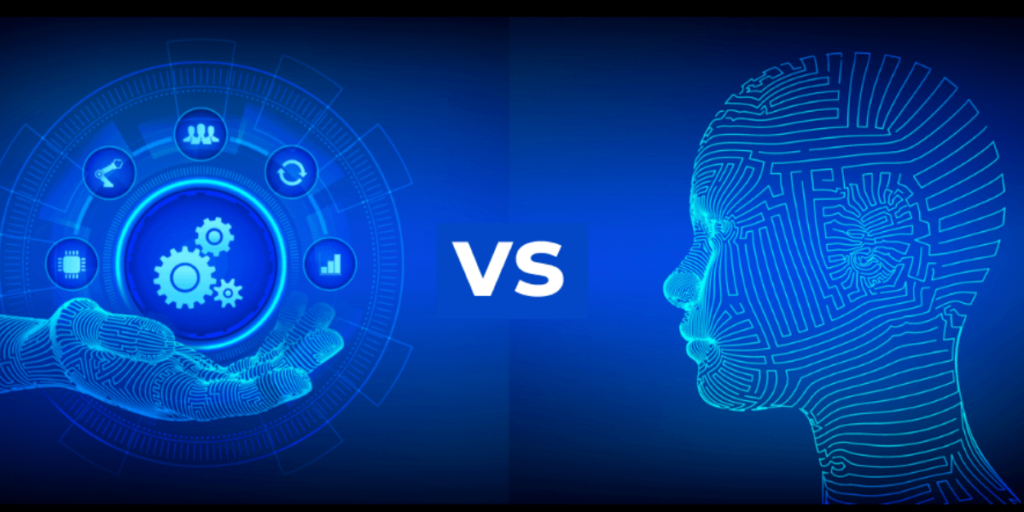The demand for online learning is high and to meet the current demand, many companies specialise in AI custom eLearning development and offer pre-designed courses. The problem arises when enterprises/companies need to decide which eLearning course would be the best for them. Often, these enterprises/companies choose the off-the-shelf course since it’s readymade, has no waiting period and is cheap compared to custom eLearning development. However, selecting the off-the-shelf option could be a bad choice. The most cost-effective and quick software solutions may not be ideal for your business or its employees.
Custom eLearning is customized to meet the needs of every organisation. Each company is unique in its way and as such, it will have its unique requirements for training based on its organisation’s culture and its systems. A customized eLearning platform is the ideal option for software training, product training, system training, new employee orientation, etc. Here are the reasons, benefits, challenges and features you should consider a custom eLearning application.
What is AI in eLearning Development?
Artificial Intelligence or AI, is now dominating various industries and eLearning development is no exception. In the context of eLearning, AI refers to the use of machines that can learn, reason and mimic cognitive behavior like humans. When applied to eLearning, AI becomes a powerful tool that can personalise every learner’s educational experience, making it more effective and engaging.
By analysing data on learners and preferences, AI can individualise the learning experience by catering to particular needs and preferences. Some examples include changing the difficulty of content, suggesting appropriate resources and giving real-time feedback that keeps learners interested and motivated.
Reasons to Choose AI in Custom eLearning Development
AI has completely changed how we learn. It can analyse huge quantities of data about learner performance, learning styles and even individual preferences to customize the learning experience. Here’s why AI is a must-have component of schools’ future plans for eLearning.
Personalised Learning Paths
AI-powered learning platforms can design personalized learning plans for every student. By analysing a student’s previous performance or learning style, the software can pinpoint his strengths and weaknesses along with modifying the content to meet his needs.
For instance, students who struggle to understand the concept may receive additional practice exercises or tutorial videos. In contrast, a more experienced student may face more complicated difficulties. The key is finding that perfect balance that will allow every student to excel.
The adaptive Learning algorithms allow this personalisation one step further by changing the difficulty level and speed of the learning material in real time. As students grow through the program, the algorithm can detect areas that require more help or provide them with the most advanced materials. In this way, each student will continue to learn at their best level.
Intelligent Tutoring Systems
Smart tutoring systems (ITS) give students instant feedback and help, similar to having a private tutor. The systems analyse a student’s work and identify mistakes, providing precise feedback along with suggestions to improve.
If, for instance, the student frequently makes a mistake in solving a math problem, the ITS will provide a step-by-step explanation of the correct answer. Then, it will assist the students in developing a system that can help them avoid making this error later on.
The virtual tutors run on the natural processing of languages. They can answer students’ questions in real time for instant clarification and assistance. This can greatly benefit students who might be reluctant to pose questions in a traditional classroom setting. We’ve been there before!
Automated Administrative Tasks
AI can help automate a variety of administrative tasks that take a lot of time, allowing teachers to focus on their passion: teaching. For instance, AI-powered grade systems can quickly and precisely examine student work and provide prompt feedback.
Additionally, AI can automate scheduling, attendance monitoring and personalised communications with parents and students. This can increase efficiency and productivity at your school.
Enhanced Student Engagement
AI-powered tools can make learning more enjoyable by incorporating games and personalised learning experiences. Students can earn badges, points and rewards when they complete assignments and achieve their learning goals, significantly boosting their motivation and making studying more enjoyable. Students who participate in gamified courses experience a 50% increase in engagement compared to traditional learning methods.
In reality, students who participate in gamified courses experience a 50% increase in engagement compared to traditional types.
Creating a custom software solution tailored to each student’s needs and learning style can help increase engagement. AI-powered platforms can suggest relevant content, like videos, articles and interactive simulations, based on the individual preferences of the student. In this way, they’ll be much more enthusiastic to learn than they are currently.
Benefits of AI in Custom eLearning Development
Facilitators, trainers and teachers typically define the course and write the content. This time-consuming task requires many hands. AI tools can now reduce this task to a large degree.
Automating Course Materials
The majority of an educator’s job is creating assessments, quizzes, data sheets and worksheets for students to practice. These can be automated routine tasks using AI tools such as Quizzizz or Lingo, which can create innovative, fresh content in a matter of seconds using just some powerful prompts.
This means that teachers have more time. It also gives them the chance to think more creatively about their quizzes and assignments instead of using the same format they’ve employed, making them feel more efficient and productive in their work.
Furthermore, since AI allows learners to learn at their own speed, they may need specific content tailored to their learning stage. Making such materials could have been difficult in the past, but it’s now possible.
Easing the Burden of Grading
Grading is a different task that takes up lots of time for teachers everywhere and this is one task that AI technology can help automate.
Multiple-choice questions can be scored and matched with AI tools. Today, teachers also have the technology to analyse essays with more subjective questions to assess the accuracy of the answers, spot any errors and provide highly pertinent feedback.
Teachers can be free to create more innovative classes and modules instead of spending hours of their time on administrative tasks related to grading.
Engaging users with Interactive Content
With AI, course content can become more interactive and enjoyable. With seemingly endless possibilities, it’s no longer necessary to require all learners to learn from the same content. Learning institutions can develop hyper-individualised programs.
For instance, imagine 30 students in a class who are each enrolled in an individual course that covers diverse subjects that help them prepare for the job they’re looking to pursue. Imagine a platform for corporate learning that predicts how roles are likely to change and provides specific learning suggestions for every employee. This gives learners control over their learning journey, making the process more engaging and meaningful.
Challenges of Adopting AI in e-Learning
The incorporation of intelligent AI in educational settings poses many challenges as well as potential advantages. Even though AI tools can help enhance learning experiences, misuse or dependence could hinder creative and critical thinking. One of the main concerns is that students may utilize AI to complete their assignments without being able to fully engage with the subject, which could hinder their development as cognitive thinkers.
Overreliance and Misuse
Dependence on AI in the form of generating whole essays could cause a decline in students’ ability to think critically, think creatively and create new knowledge. While AI can aid in focusing on more complex cognitive tasks, this is dependent on the student’s genuine curiosity and determination to engage fully with the subject.
Ethical and Responsible Use
Teachers should guide students in using AI legally and ethically. This means ensuring that they properly cite AI-generated content and understand its limitations and biases. Teachers should be trained to keep track of AI interactions and provide constructive feedback so that AI helps rather than hinders learning.
Impact on Cognitive and Emotional Development
The possibility of AI replacing human interactions in education is a cause for concern regarding social-emotional skill development, which is essential for overall growth. Research into AI’s long-term effects on the development of intellectual and emotional well-being is essential. Teachers must be alert and aware of these issues and ensure that AI can be a useful tool, not a deterrent, in the pursuit of education goals.
In conclusion, although generative AI can significantly benefit education, its implementation requires careful oversight to avoid negative consequences for student development and learning.
AI in eLearning: Most Common Use Cases
Large Language Models such as ChatGPT or Gemini have created new possibilities for online learning platforms. Here are some well-known as well as promising methods AI can revolutionise online learning:
Intelligent Tutoring
A simulation system is available that replicates human behavior during learning and gives feedback that is person-touched to an individual student. Intelligent Tutoring Systems use machine learning and natural language processing to evaluate students’ performance and make improvements. There are several ways to interact with Intelligent Tutoring Systems: conversation or other forms of communication.
Automated Grader
If we want to maximize tutors’ time and energy, we can use AI/ML to help automate the evaluation process. This can be accomplished using various methods, such as assessments and questionnaires. LMS firms work to make it difficult for the models to pinpoint areas for improvement or spot mistakes with great accuracy, which means tutors can focus on their unique and distinctive methods by giving feedback.
Chatbots and Assistants
Chatbots can be provided if students require continuous feedback wherever and whenever they are studying. Support for tech, including educational content, assisting with questions and such, is simple work for assistants or chatbots. Certainly, these AI assistants will automatically determine what the student is doing and provide the correct details accordingly.
Adaptive Learning
Adaptive learning employs AI to personalise and adjust educational content based on data from students’ performance. Therefore, the degree of learning can be determined according to student performance. This is a great way to optimize learning pathways in dynamic environments to increase effectiveness.
Predictive Analytics
Another excellent feature is that it assists in analysing the student’s behavior in class and anticipates future performance. Predictive Analytics is an effective tool for determining the most effective student or who needs to enhance and improve the curriculum.
How to Integrate AI in an E-learning Application?
As technology advances, so does education. Online learning has become a favored method of learning as well and with the advent of artificial intelligence (AI) and its rise, it is becoming more effective.
Incorporating AI within your e-learning program with the help of an education software development company may allow you to customize your learning experience, give immediate feedback and increase the engagement of students. However, in this section, we will discuss how you can incorporate AI within your e-learning program by yourself.
Choose the Right E-learning Application
Before you can integrate AI into your e-learning software, it is essential to select the appropriate platform. There are numerous E-learning platforms to choose from, each with unique advantages and disadvantages. It is important to select an option that’s capable of AI integration and also has the required features and functions.
One of the most effective E-learning software programs that allows AI incorporation is Moodle. Moodle is a free learning management system (LMS) that is simple to use and extremely customisable. Additionally, it’s compatible with an extensive array of AI tools and technology.
Identify the Problem Areas
The next stage is determining the problematic areas of your online learning application. Are there areas in which students have the greatest difficulty? What areas do they require the most assistance? By identifying these areas, you can figure out how AI can enhance the quality of learning.
For instance, if students struggle to comprehend complex concepts, AI-powered tutors can help them retain knowledge and AI-powered tests can enhance learning.
Choose the Right AI Tools
You can select the appropriate AI tools once you’ve identified your problem areas. Numerous AI tools can aid in improving the quality of learning. The most widely used AI tools for e-learning are:
- Virtual Tutors
AI-powered virtual tutors can offer customized instruction and feedback for students.
- Learning Through Adaptive Learning
Adaptive learning platforms use AI to customize the learning experience according to the student’s strengths and weaknesses.
- Chatbots
AI-powered chatbots can provide immediate assistance and feedback to students.
- Processing of language
AI-powered tools for language processing can aid in improving reading comprehension and writing abilities.
Integrate AI into Your E-learning Application
The last step is to incorporate AI into your e-learning software. Depending on the AI tools you’ve selected, this can be done in various ways.
If you’ve selected artificial intelligence-powered tutors for virtual students, you can connect them to your online learning platform. In addition, if you’ve decided to go with an adaptive learning approach, you could integrate it into the course builder of your platform. Chatbots can be integrated into your platform’s messaging system and the tools for processing languages can be incorporated into the platform’s assessment and grading system.
Integrating AI into your e-learning software will enhance your experience. By selecting the best E-learning platform, identifying problematic areas, selecting the appropriate AI instruments and then integrating them into your application, you can provide an interactive and personal learning experience that meets your learners’ requirements. With the appropriate AI devices, you can aid your students in reaching their maximum potential and preparing them for future success.
Measuring Success Post-Implementation
The first step in exploring AI-driven e-learning platforms can be exciting. However, it’s crucial to establish robust metrics to see whether the system is working. Examine the level of engagement of learners, course completion and skill growth. These metrics show whether the platform you use aligns with your goals.
Key Performance Indicators (KPIs)
Pay attention to metrics like time spent using the system, interaction and the extent to which learners retain the lessons they have learned. These metrics allow you to make informed decisions. They also aid in improving the learning experience, which makes your investment worthwhile.
Continuous Improvement Strategies
Use the information you gather from your KPIs to continue improving. You can alter the content, personalise the learning path or make it more enjoyable to use. Be sure to check how the platform is performing and adjust it if needed. This helps keep your AI E-learning up-to-date and efficient.
Gathering and Analysing User Feedback
It’s crucial to pay attention to what users have to say to keep getting better. Feedback from users helps you determine the areas that need improvement and help you resolve issues. With their help, ensure the system is built specifically for their needs. So, you can keep making your learning experience more enjoyable and reap the maximum benefit of AI.
AI Technologies In eLearning Development
AI is utilized in e-learning in various ways. Let’s look at how Artificial Intelligence can enhance education, improve instruction, tailor it to the individual and speed up administration procedures.
Natural Language Processing (NLP)
AI can translate and comprehend human language using NLP technology. It can analyse speech, written assignments and essays. NLP will evaluate how well they are written, offer stylistic and grammatical feedback and provide summaries or suggestions to improve. Students can get constructive feedback and build their writing abilities with NLP.
Virtual Reality And Augmented Reality
Combining AI with Augmented Reality (AR) and Virtual Reality (VR) can create exceptional learning environments. Students can explore complex concepts through simulated science experiments or exploring historical places using eLearning technology. These experiences have been greatly enhanced with AI, which can tailor the experiences to a student’s learning route.
AI is commonly utilised to create immersive learning experiences for AR and VR applications. AI systems monitor progress, offer specific guidance and adapt to the virtual world.
Intelligent Tutoring Systems
AI is utilised in intelligent tutoring systems (ITS) to offer students individualised instruction and feedback. ITS mimics tutoring for individual students by modifying help and meeting the particular needs of students. ITS can assess students’ performance, identify gaps in their knowledge and offer examples or explanations designed to meet the student’s learning needs.
Intelligent tutoring systems provide students with individualised instruction and feedback. They use AI to detect mistakes and learners’ strengths and weaknesses.
AI-Powered Assessment Tools
Artificial Intelligence can improve the assessment process by grading homework, tests and quizzes. Automated systems utilise Machine Learning techniques for grading. They are able to assess students’ responses and provide immediate feedback. This eases the burden on teachers and provides students with immediate evaluation of their performances and opportunities to grow.
Predictive Analytics
AI is utilised in predictive analytics, allowing us to forecast future results based on past data. Predictive analytics in eLearning can detect students who may be behind, suggest interventions and suggest additional materials. Teachers can help students and improve retention rates by proactively detecting potential issues.
Adaptive Learning Systems
The most attainable application of AI in the field of custom eLearning development is the adaptive process of learning. AI systems analyse students’ performance to identify weaknesses and strengths. They allow the creation of individualised teaching methods. This flexibility means students can learn by absorbing complex concepts and improving in areas where they excel more quickly.
These systems offer educators and students instant feedback that is constantly adjusted in response to user input. Adaptive learning boosts students’ enthusiasm and engagement by increasing the effectiveness and efficiency of the learning process. This assists students in reaching their learning goals.
Virtual Learning Assistants
Virtual assistants for learning use Artificial Intelligence and Natural Language Processing to interact with students. They are often known as chatbots and voice-activated assistants. They can help enhance your learning experience by providing assistance in the form of explanations or answers to queries.
Content Creation And Recommendation
AI-enabled platforms can create educational content, including tests, simulations or multimedia presentations. In addition, based on students’ performance, preferences and interests, they may recommend appropriate resources and learning material.
Gamification
A successful method of gaming Artificial Intelligence is adaptive game design, where the game is modified based on the participant’s abilities and progress. For example, depending on how well the player performs, the game could change its pace to better adapt to the learner’s preferred learning style and difficulty level.
Data-driven learning analytics is a different method for using AI to make content more gamified. This approach carefully analyses game data to give insight into learner performance and behavior. This will assist educators and designers in deciding which game mechanics and aspects are the most effective for encouraging learning.
Collaborative Learning
Collaboration platforms for learning powered by AI allow learners to collaborate and share their knowledge in groups. To facilitate collaboration in learning, they offer instant feedback, intelligent algorithms for grouping and virtual platforms for collaboration.
Best Practices to Implement AI in eLearning Development
Generative AI is an innovative technology capable of producing original content that can change how eLearning is developed. As eLearning platforms aim to provide students with amazing and enthralling learning experiences, using Generative AI’s capabilities has become imperative.
Employing the most effective practices to attain these goals and achieve greater results is always beneficial. In the case of a huge and advancing technology like Generative AI, making an inventory of the things you must be aware of could be a game changer.
We’ve compiled a list of the best methods to implement Generative AI in custom eLearning development.
Define Your Learning Objectives Clearly
Before examining ways to use Generative AI in custom eLearning development, you first need to know the learning goals you wish to accomplish. This involves identifying the knowledge of skills and behaviors you want learners to learn or exhibit.
Choose the Right Generative AI Model
There are many types of Generative AI models on the marketplace, including image generators, language models and VR simulators. You must choose the one best suited to your requirements for eLearning. For example, if you plan to develop content based on text using a language model, GPT-3 is the best choice.
Adopt eLearning Technology and Content Solutions
You must align yourself with a reputable technology for eLearning and a content solutions supplier. It will open up your custom eLearning development plan to the latest technologies and allow seamless integrations with your desired Generative AI models.
Monitor and Evaluate Your Content
You must continuously review and assess your content to ensure high performance, DEI and speed. Utilise performance indicators, feedback loops and other methods to determine the efficiency of the artificial intelligence-driven eLearning creation process.
Start Small and Iterate
Start with a pilot program or a test run to determine the effectiveness and efficiency of your Generative AI model and gather feedback from the stakeholders. Utilise this feedback to refine and improve the content creation process before scaling it up.
Future of AI Custom eLearning Development
Future artificial intelligence (AI) developments in developing web-based educational programs are thrilling. Here are some futuristic developments to watch out for:
Predictive Analytics
Instead of just observing the events that have occurred, AI can now use this data to predict the future. This kind of proactive approach significantly improves the effectiveness of learning.
Personalised Feedback Mechanisms
AI-driven systems that provide feedback to students will provide more sophisticated and personalised feedback. This could include in-real-time performance feedback, suggestions for improvement and specific learning tools.
Adaptive Learning on Steroids
The algorithms utilised in AI will improve in altering the course of a student’s education in real time. The result will be that all students receive an individualised and optimised learning experience.
As AI technology advances, we can expect to see more creative and efficient e-learning solutions created with AI. Join the ranks of those who embrace AI today to ensure that your company isn’t out of the loop when the next major revolution in learning and development takes place.
Conclusion
AI Custom eLearning software development is an effective way to deliver effective, learner-centered training. When combined with AI in eLearning, the process transforms learning into adaptive, dynamic experiences that boost learning and engagement.
If your business is seeking to go beyond the shelf-shelf options or use Artificial Intelligence in eLearning, custom-designed eLearning provides the flexibility, scalability and creativity required to meet your objectives. Making the investment in AI custom eLearning isn’t only about addressing current training requirements; it’s about creating a workforce that is future-proofed to ensure its continued success in an ever-changing world.
FAQs
How can AI be used in eLearning?
Content creation is one of the most obvious uses of AI technology, which can produce training materials such as quizzes, games or even case studies. Therefore, organisations save time and expense while ensuring that their content is relevant and engaging. AI will enable a customised experience suited to each employee’s needs.
What are the main advantages of AI-driven e-learning platforms for enterprises?
AI-driven e-learning platforms improve learning. They offer smart content and interactive features, making it easier for learners to stay involved and remember information more effectively.
They are also developing individualised learning plans. They use data analytics to track progress and give instant feedback.
What are some of the challenges faced while implementing AI in eLearning?
According to the experts, some of the possible challenges or limitations of using AI in e-learning education are the necessity for significant study and testing, concerns regarding data privacy, usage and the struggle to find the right balance between the advancement of AI and human-to-human interaction in this sector.
What are the ethical considerations for using AI in the development of eLearning?
The implications of using AI custom eLearning development include data security and privacy, reducing the bias of suggestions and content, openness of decision-making and learners’ flexibility with AI custom eLearning development. In this manner, organisations can protect the rights of learners, especially those with disabilities and build greater trust in AI-powered learning experiences.



